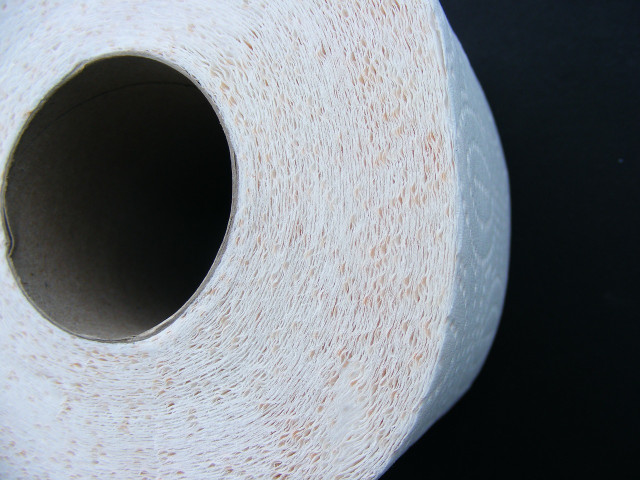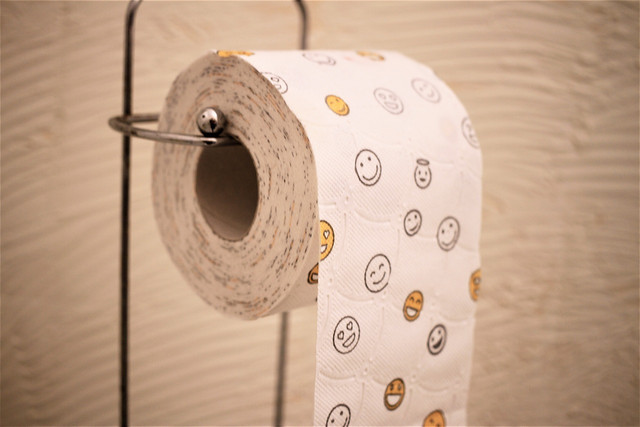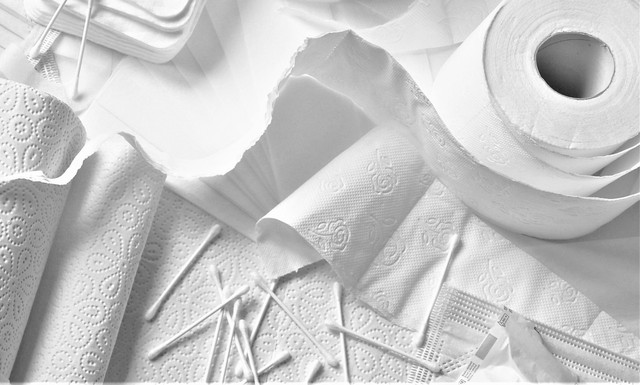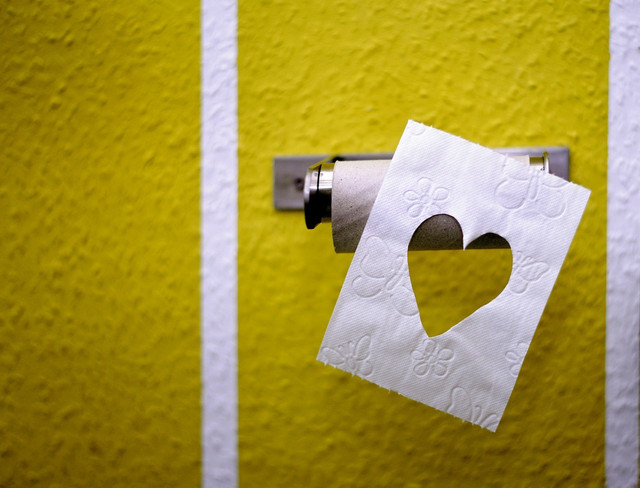What is toilet paper made of? Most people use it every day but have no idea how it's produced. Let's discuss how toilet paper is made and see if it's sustainable.
This soft and lightweight paper product is primarily designed for personal hygiene. The material typically used for toilet paper is crafted from a combination of recycled paper fibers and wood pulp, although the specific components can differ between different products. So, what is toilet paper made of?
What Is Toilet Paper Made Of?

(Foto: CC0 / Pixabay / byrev)
Toilet paper is much more complex than you might realize. Here is a list of the most common components used to make toilet paper:
- Wood Pulp: To make toilet paper, companies use fibers from softwood trees like spruce or pine. These trees are processed to extract the fibers, which are then bleached and mixed with water to make a pulp.
- Recycled Paper: Many toilet paper manufacturers use recycled paper fibers in their manufacturing processes in addition to wood pulp. The recycled paper fibers can come from old newspapers or office papers. The ink and other unwanted materials from the papers are removed and the paper is processed into a pulp, just like the fibers of the softwood.
- Water and Chemicals: Water is an important element in the production of toilet paper since it assists in the spreading and suspension of the fibers as they are formed. Other compounds can be added to the pulp and water mixture to increase the softness, strength, and absorbency of toilet paper. Bleach and softeners are two examples of chemical additions.
- Additives: Additional additives may be used to improve the performance of the toilet paper. For example, some products contain lotion, aloe vera or other ingredients to give the skin a softer sensation. To make the toilet paper’s aesthetic appeal better, sometimes fragrances are added to the paper as well.
How Toilet Paper is Made



(Foto: CC0 / Pixabay / Carola68)
Now that we collected the ingredients that are needed to make toilet paper, let’s figure out how toilet paper is made. Here’s an outline of the toilet paper production process:
- Preparing the raw material: Softwood trees, such as spruce or pine, are harvested and their bark is removed. The debarked street are chipped into small pieces and the chips are processed to extract the cellulose fibers.
- Production of the pulp: The extracted wood fibers undergo a cooking process with chemicals and water to further break them down and to separate the fibers from impurities. This step produces the pulp.
- Treatment of the pulp: To achieve more brightness and eliminate contaminants, the pulp is bleached. Here, extra chemicals like softening agents or colors are added.
- Papermaking: To create a slurry, the treated pulp is combined with water. This mixture is evenly spread onto a moving wire mesh or screen. After the water has been extracted, the remaining strands join together.
- Pressing and drying: To eliminate extra water and increase thickness and density, the wet paper sheet is pressed between rollers. Then, it is heat is applied to dry it and remove any moisture that may still be present.
- Finishing: With the help of heated cylinders the dry paper sheet is smoothed and rolled up into jumbo rolls. These jumbo rolls are divided into rolls of a normal size afterward. In order to be able to tear individual toilet paper sheets, perforations are added.
This summary provides a general concept of the steps involved in how toilet paper is made, but it’s important to keep in mind that different brands and varieties of toilet paper may have somewhat different production processes.
Negative Environmental Effects of Toilet Paper



(Foto: CC0 / Pixabay / pasja1000)
The use of toilet paper is not completely sustainable and can harm the environment in various ways, even though many manufacturers are trying to put a stronger focus on sustainability nowadays. Let’s look at the main problems concerning toilet paper:
- Deforestation: Making toilet paper requires cutting down many trees. This can lead to deforestation, which harms plants and animals that depend on forests for their homes.
-
Resource Use: Toilet paper production uses a lot of water, energy, and chemicals. Water is needed to make the paper, and energy is used in different stages of production. Chemicals can be harmful if not handled properly.
-
Climate Change: Making toilet paper creates greenhouse gas emissions, which contribute to climate change. Also, cutting down trees reduces the amount of CO2 that forests can absorb.
-
Water Pollution: The chemicals used in making toilet paper can end up in water sources, like rivers and lakes. This can harm fish and other aquatic creatures.
-
Waste Generation: Using a lot of toilet paper creates a lot of waste. While toilet paper itself can break down naturally, excessive usage and improper disposal create more garbage. Additionally, the plastic packaging around toilet paper adds to the problem of plastic pollution.
As we can see producing and using toilet paper has a negative impact on the environment in general. That said, there are techniques to mitigate this effect.
Eco-friendlier Alternatives



(Foto: CC0 / Pixabay / congerdesign)
There are measures that may be taken to reduce the environmental impact of using toilet paper including several alternatives to toilet paper. Check out what companies have developed and what you can do to lessen your impact:
-
Bamboo toilet paper: It’s an eco-friendly option made from bamboo, a fast-growing plant. Bamboo toilet paper is biodegradable and often comes in packaging that doesn’t harm the environment.
-
Recycled toilet paper: This type of toilet paper has a high percentage of recycled paper, like old newspapers or office paper. By choosing recycled toilet paper, you help save trees and reduce waste. Also, look out for toilet paper that is not bleached.
- Using fewer sheets: You might want to overthink how much toilet paper you use and whether that amount can be reduced. Often, the necessary amount of toilet paper is much lower than the amount of toilet paper that is flushed down the toilet.
-
Biodegradable wet wipes: If you like using wet wipes, look for ones that are biodegradable and can break down easily in the environment. These wipes are often made from plant-based materials.
-
Bidets: These are devices that use water to clean you after using the toilet. They can replace or reduce the need for toilet paper. Bidets can be installed as separate fixtures or as toilet seat additions.
This is a selection of popular alternatives and there are many other ways to create a less harmful impact on the environment. Last but not least, when choosing an alternative, think about what suits you best in terms of being eco-friendly, comfortable, and convenient.
Read more:
- 5 Affordable Water-Efficient Toilets for 2023
- How Often Should You Shower?
- 10 Mistakes That Keep Everyone From Saving Water
Do you like this post?









